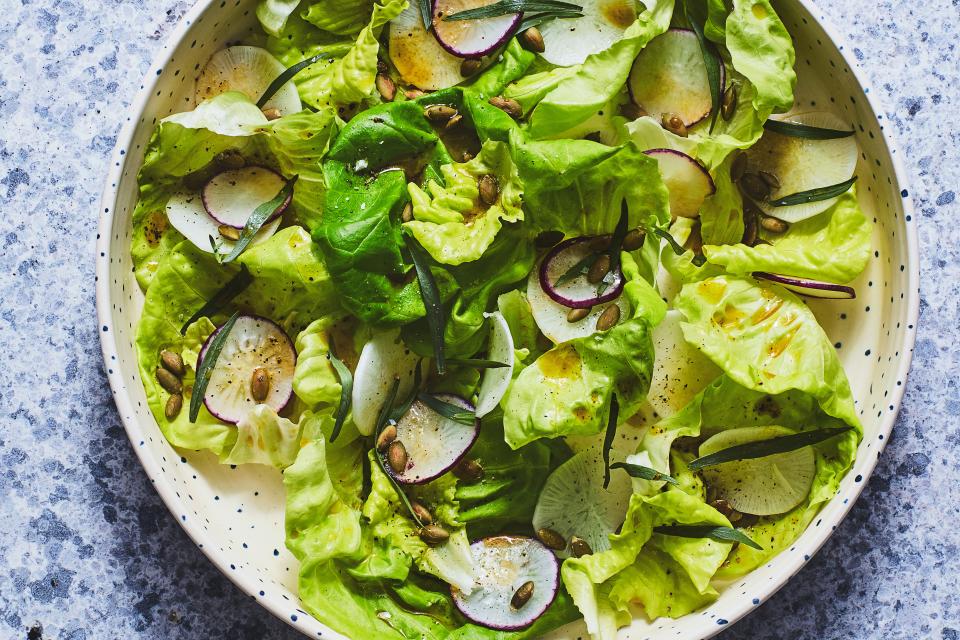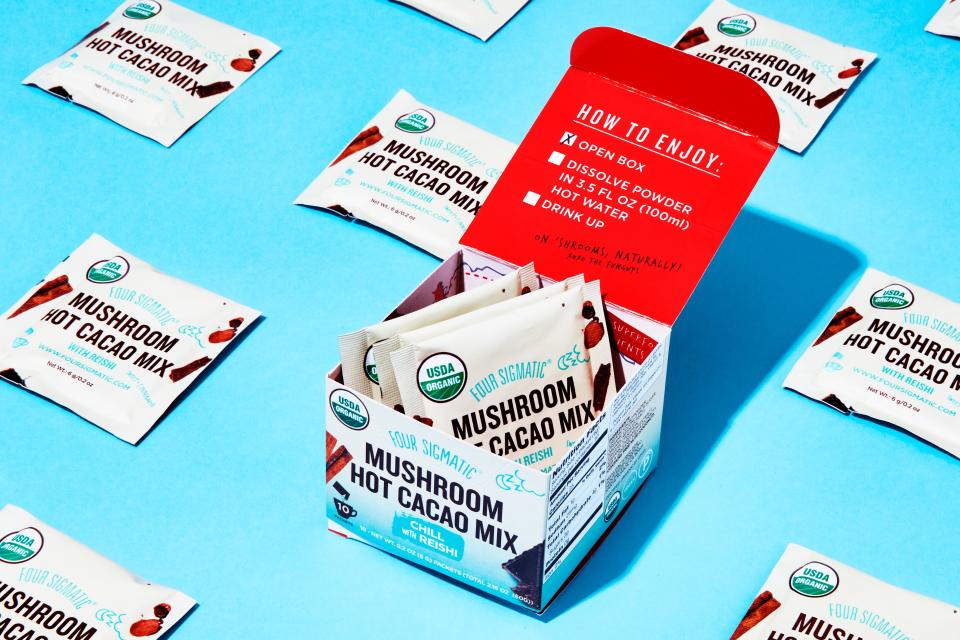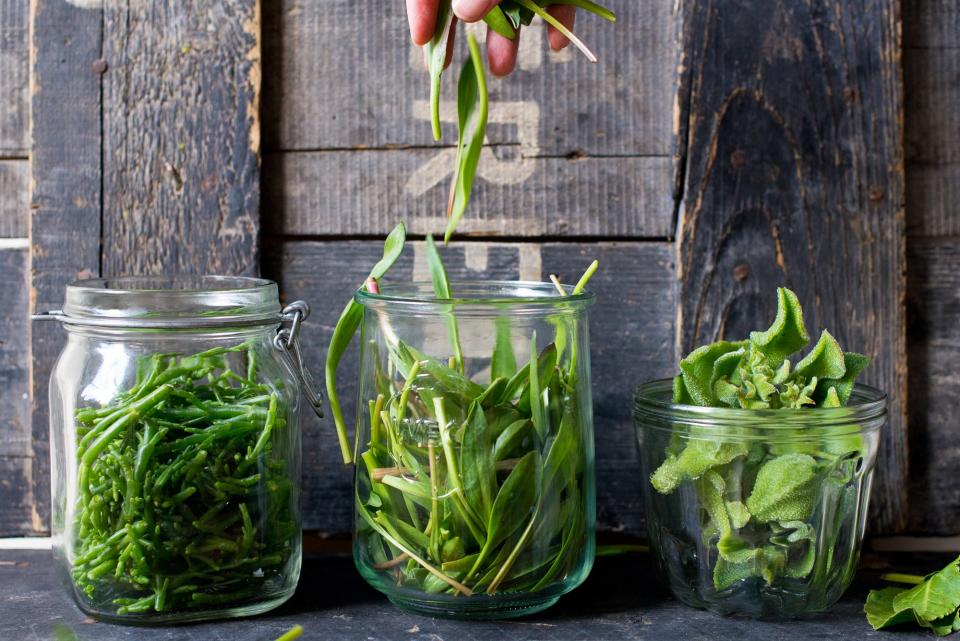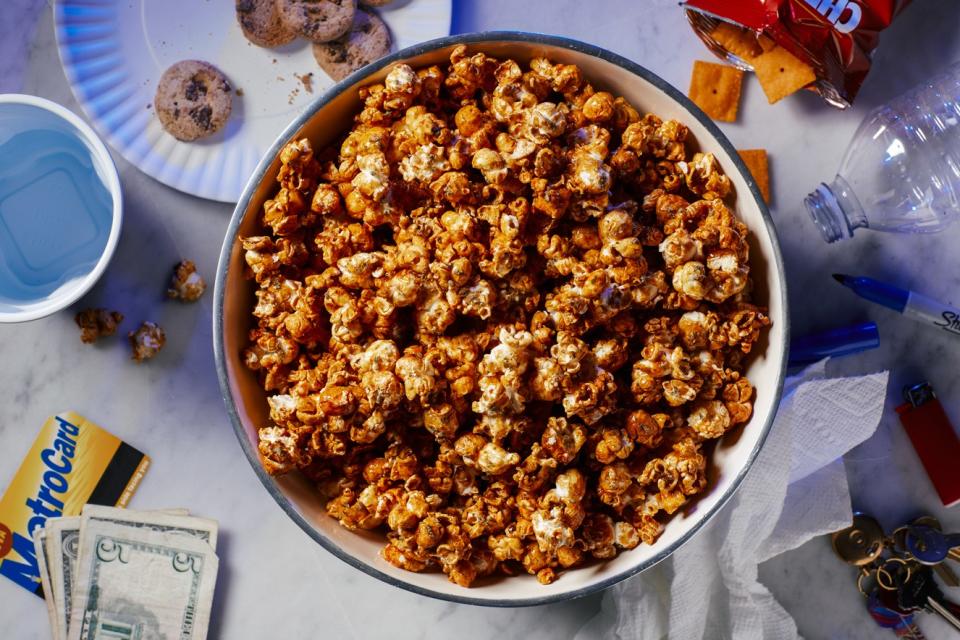I Tried Cooking With CBD Oil for 7 Days and Here's What Happened
There are a lot of things you can do to boost the healthfulness of your cooking. The current trend: CBD oil, a nonpsychotropic derivative of the cannabis plant that won't get you stoned, but has been shown to combat such illnesses as epilepsy, fibromyalgia, chronic fatigue, early onset Alzheimer's and dementia, and even inhibit the growth of some cancer cells. The degree to which CBD oil can affect those varied disorders is still being investigated, but studies have shown the oil to have anti-inflammatory, antidepressant, and anxiety-reducing properties. So if you're into feeling better, feeling happier, and feeling more calm, you may as well pull up a dram.
It's "like a warm hug from grandma". If your grandma is a hippie.
Not to be confused with non-CBD hemp oil—which is also used by as a health aid, usually as a protein supplement—CBD oil is typically extracted from the leaves, stem, and flowers of the hemp plant, while hemp oil is extracted from the seeds. The bottom line: hemp-derived CBD oil is THC-free, legal to buy in all 50 states, and easily accessed online.
While it's easy enough to take a pill or spoonful of liquid CBD oil to obtain your daily dose—or to nibble on a chocolate anytime you're feeling anxious—more and more people are choosing to incorporate the product into their everyday routines. I took on that challenge for team Epi: stirring, whisking, and drizzling CBD oil across my diet over a seven-day period.
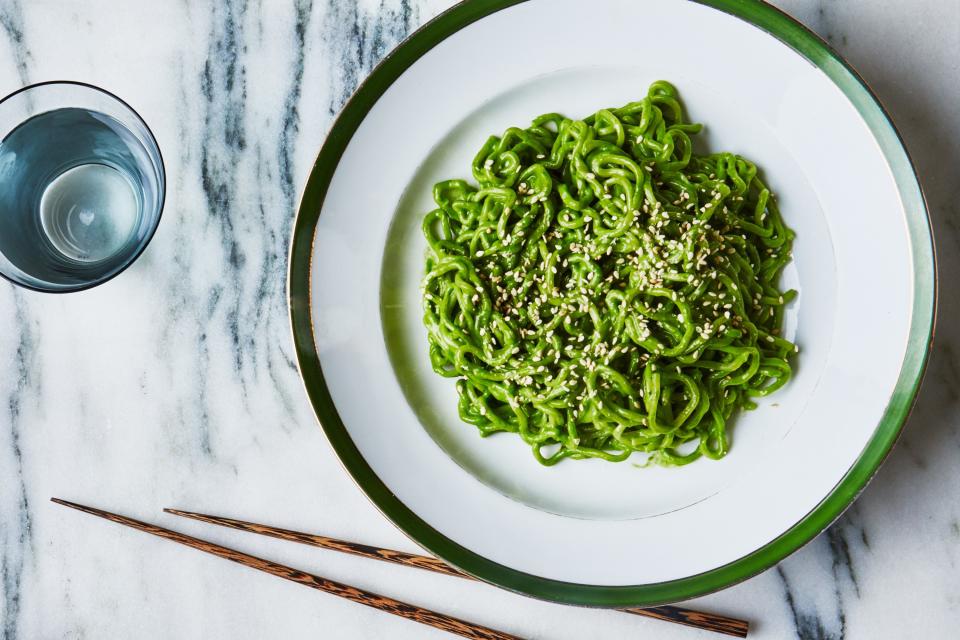
Ramen Noodles with Miso Pesto
I sourced my CBD oil from HempMeds, a company that makes three different extractions: a green-labeled raw version, a blue-labeled decarboxylated (i.e. heated to intensify the CBD compound), and a gold-labeled decarboxylated and filtered version (the filtering is purely to remove any residual plant materials, thereby creating a mostly flavorless oil—which is probably why the gold bottle is the version most recommended for cooking). Over the course of a week, I tried cooking with all three bottles.
Day 1
I started the day by adding the filtered version to a fruit smoothie. I couldn't taste anything different. And unlike when I had tried a spoonful of the oil on its own and had felt a little foggy (and, tbh, queasy), I didn't notice any mental or physical effects.
For my first attempt at actually cooking with CBD oil, I grabbed a bottle of the raw extraction—Dr. Stuart Titus of Medical Marijuana, Inc. had instructed me to try using the green label in the evening as it has demonstrated a "remarkable effect on the central nervous system," and he often prescribes it as a nighttime supplement for patients who suffer from sleep issues—and mixed it one-to-one with butter in a skillet. I tossed in some sliced carrots, a drizzle of honey, and a splash of water for an easy riff on glazed carrots. As soon as that oil started to heat up, my tiny enclosed kitchen smelled like I'd just gotten trapped in an elevator with an excessively sweaty pot-head. Once the carrots were tender, I tossed in a generous handful of chopped parsley in an effort to mask the acrid flavor I'd no doubt just created.
Once tasted, however, the carrots weren't nearly as bad as I had expected, and my boyfriend—who hadn't smelled them cooking—thought they tasted fine. As I ate, though, that astringent, herbal eau-de-bong-water essence kept growing in my mouth and, after finishing my dinner, lingered on my palate for some time.
Immediately after getting up from my dining table, I felt a dizzying rush followed by a wash of inertness. Translation: I felt high—but only very briefly (maybe for 3 or 5 minutes) and the feeling dissipated as quickly as it came on. (I should stress that there is no THC in any of these products, so this doesn't make any sense. But it happened to me, so it's worth noting. FWIW, I didn't experience that sensation again at any time during the week.)
In addition, besides the noxious odor, I realized my gaffe too late: cooking with the green label probably negates any added benefits the raw product brings to the table in the first place. #GoMe
Lessons Learned: Don't place CBD oil over direct heat. While warming the oil may increase its effectiveness, heating the oil too high can cause it to loose terpenes, volatile compounds that work in tandem with the CBD to increase the medical potency. Also, more importantly, it tastes absolutely foul.
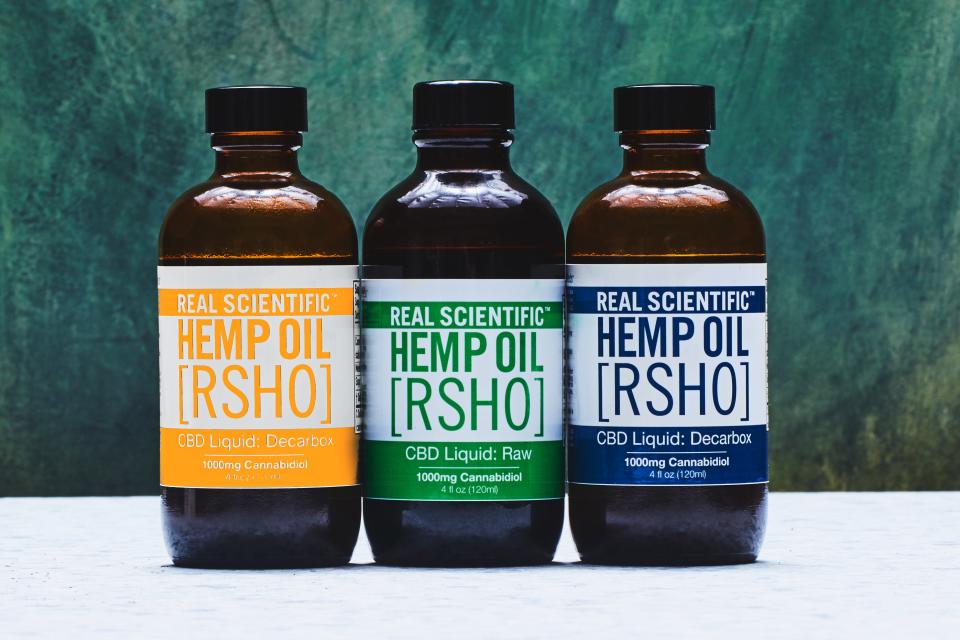
CBD Oil Salad Dressing INSET
Day 2
My boss wanted to know if you could fry an egg in CBD oil, but after the whole sweaty-pothead odor fiasco on Day One, I was not eager to get that oil anywhere near a frying pan. Instead, I made a breakfast sandwich and drizzled the CBD oil over the bread after toasting it, before topping it with a regular old fried egg. It was a success.
For dinner I used the raw extraction again to make an easy salad dressing that I loaded up with herbs to mimic (i.e. mask) the product's herb-forwardness. It's a simple enough procedure whether you're making salad for one or for ten—just substitute about 3/4 to 1 teaspoon CBD oil for every serving of whatever oil is called for in your recipe. (So if your recipe makes enough salad dressing for four people, take out 3 to 4 teaspoons of the recommended oil and replace it with CBD.) It was good, and easy, and delicious while eating; but once dinner was done, that telltale muskiness lingered again.
Lesson Learned: I think the raw product is just really not for me.
Day 3
I started with a smoothie again, this time a green, spinach-based one loaded with cherries and bananas and flax seed and chia seed, plus the blue label CBD oil and a dollop of cashew butter. It was delicious and I felt virtuous AF.
I was a little more ambitious at dinner and made this curried lentil soup, whisking a dose of gold-label CBD oil into the coconut milk I used to garnish the soup. Per Dr. Titus, "if you ingest CBD with other beneficial fats (such as the fat in coconut milk) it aids in absorption into the lymphatic system, which regulates the body's immune function." Plus, that oil, when emulsified into the milk, added body and thickness to the garnish so it drizzled a little more satisfyingly.
Lesson Learned: Sauces and garnishes are the way to go when you're cooking with CBD oil. (But to make sure you're getting your full daily allowance, just make sure to eat all your sauce.)
A Word of Caution: After eating that soup, I had a super-weird dream about being stuck in a long corridor with a cartoon hippo. I can't prove that the CDB oil had anything to do with that, but if you have a similar dream after ingesting some, please let me know.
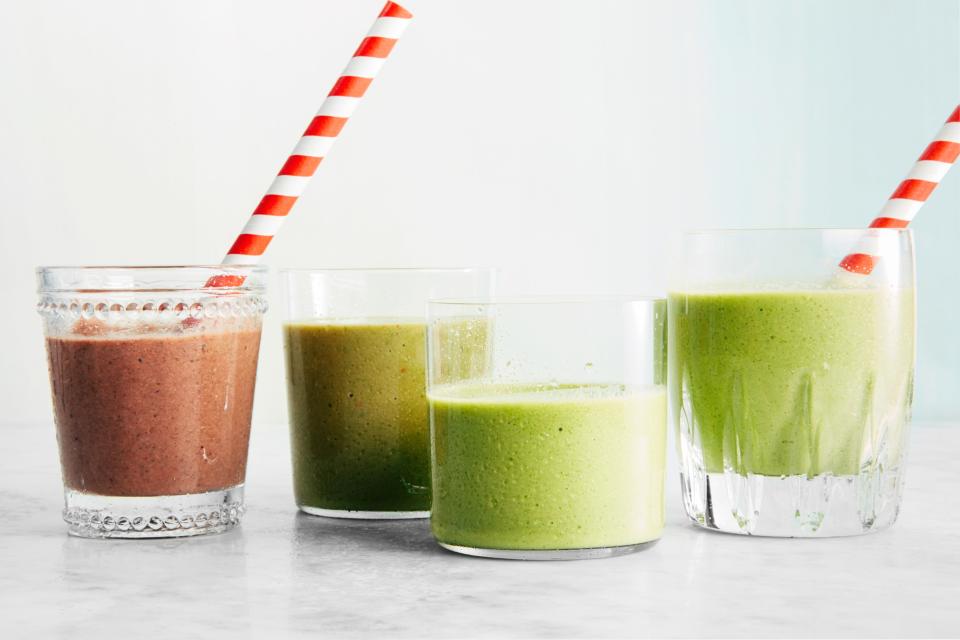
NRR Smoothies- Hero
Day 4
I don't know if peanut butter counts as a beneficial fat, but that's how I got my morning CBD boost, by stirring it into a spoonful of the stuff before spreading on a PB&J. I guess I could have used almond butter, but...peanut butter is so much better.
The herbiness of pesto seemed like a great option for incorporating the earthy blue label, so that's what I did. Using this recipe for inspiration, I simply added the CBD oil to the blender in place of some of the grapeseed oil called for in the recipe. Total success, and with the strong flavors from cilantro, miso, and sesame oil, the inherent muskiness of the CBD was barely noticeable.
Lesson Learned: Strong flavors can handle the addition of the less-refined CBD oils a lot better than subtly-flavored foods. So if you're cooking something very herb-forward, an unfiltered oil can be a great choice since it contains more amino acids and vitamins than the filtered version. If you're sensitive to flavor, however, and want to incorporate the product into something more delicate, stick to a filtered extraction.
Day 5
I thought about making a yogurt cup, but then went for that cherry-spinach smoothie again. For dinner, I reheated my lentil soup, and—having run out of coconut milk—simply drizzled the gold-label CBD oil over the top of my soup as a garnish. It worked just as well, although the flavor of the oil was a little more pronounced than it had been when first incorporated with the coconut milk.
Lesson Learned: Mixing the oil into another ingredient is a better option for flavor’s sake, but simply drizzling it on top of a soup, stew, or curry works in a pinch.
No, not edible marijuana, nor wild foraged plants. Here’s everything you need to know about seaweed, the power vegetables that can help save the environment while adding an umami punch to your cooking.
Day 6
I whisked the oil into scrambled eggs, which I like to make with a dollop of Greek yogurt, and cooked the eggs in butter. I was nervous that I would have a repeat of Day 1, but whisking the oil into the eggs first (and using the filtered oil instead of the raw one) seemed to temper any volatile aromas. The eggs tasted okay. I would say that I prefer my scrambled eggs without CBD oil, but it works if you want to try it.
I went out that night. And even though I planned ahead and packed the gold label along with me, I didn't take my evening dose. I guess the good news is that I actually didn't feel that bad about it, so maybe the cumulative calming affects of the oil were actually working.
Lesson Learned: You're not going to go into a tailspin of anxiety if you miss a dose. Hooray!
Day 7
I stirred the filtered oil into a yogurt sauce to drizzle over a breakfast grain bowl. Simple, elegant, easy.
For dinner I made fish 'n' chips and I stirred the CBD oil into my tartar sauce. (Side note: this is decidedly not one of those healthy fats Dr. Titus was talking about.) But it worked, and I ate all the tartar sauce and I was happy as a clam. (A fried clam. Dipped in tartar sauce.)
Lesson Learned: I ultimately found that the more refined oil (i.e. the decarboxylated and filtered oil) was best for all cooking applications. Because while the other two oils could blend into some recipes easily—especially herb-heavy ones—they often left a lingering aftertaste that I found unpleasant.
As with any health supplement, it's important to talk to your doctor to make sure that it won't adversely affect any of your current medications. And since the tests are still out on an official recommended daily allowance, Dr. Titus suggests adjusting the amount of CBD oil you take, starting at around 5 to 10 mg per serving, 2 to 3 servings per day until you find a dose that works for you. But if you start seeing any cartoon hippos or find yourself aimlessly roaming endless corridors, maybe cut back just a little bit.
